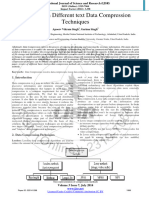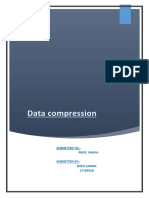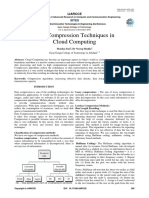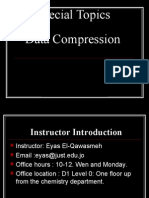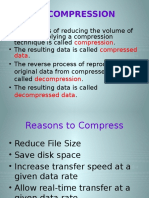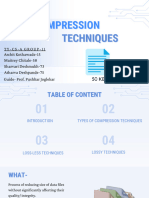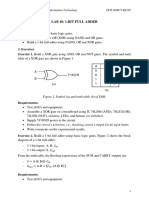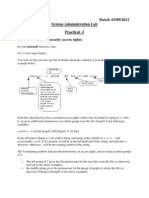0% found this document useful (0 votes)
13 views9 pagesData Compression Review
This review paper explores data compression techniques, highlighting the importance of lossless and lossy methods in efficiently representing, storing, and transmitting digital data. It discusses popular algorithms, their applications in various fields such as multimedia, communication systems, and healthcare, as well as recent advancements in AI-driven compression methods. The paper emphasizes the growing significance of data compression in an increasingly data-driven world and outlines future challenges and directions for research.
Uploaded by
Adedeji BoluwatifeCopyright
© © All Rights Reserved
We take content rights seriously. If you suspect this is your content, claim it here.
Available Formats
Download as PDF, TXT or read online on Scribd
0% found this document useful (0 votes)
13 views9 pagesData Compression Review
This review paper explores data compression techniques, highlighting the importance of lossless and lossy methods in efficiently representing, storing, and transmitting digital data. It discusses popular algorithms, their applications in various fields such as multimedia, communication systems, and healthcare, as well as recent advancements in AI-driven compression methods. The paper emphasizes the growing significance of data compression in an increasingly data-driven world and outlines future challenges and directions for research.
Uploaded by
Adedeji BoluwatifeCopyright
© © All Rights Reserved
We take content rights seriously. If you suspect this is your content, claim it here.
Available Formats
Download as PDF, TXT or read online on Scribd
/ 9
